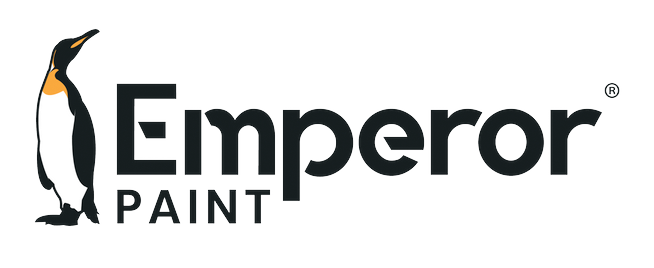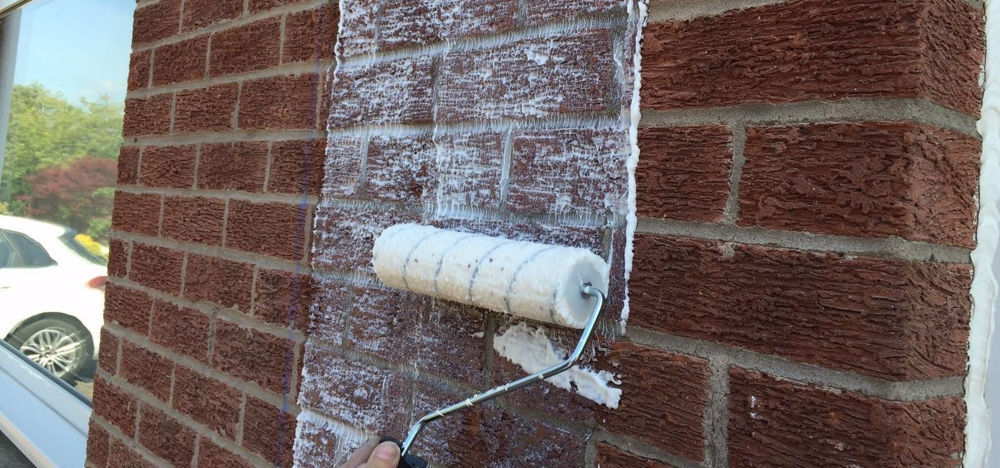
Why Should You Waterproof Brick & Masonry Walls?
Whether your house is a new build or a traditional building, waterproofing your home is essential for maintaining its integrity.
Contrary to popular belief, exterior brick & masonry walls are porous, meaning they absorb moisture. The more porous the surface, the more moisture it can uptake. This is also the case with previously painted exterior walls, as these are most commonly painted using acrylic-based masonry paints. These acrylic masonry paints are labelled 'weatherproof' or 'weather resistant' as they are not completely waterproof. When moisture enters a building through the exterior wall of a property, this is called water ingress, which is a all-too-common problems across the UK.
Water ingress can have a wide variety of impacts on a property. Some of the common side effects of water ingress include:
DAMAGED BRICKWORK AND MASORNY
One of the most important aspects of water ingress is the damage it can cause to exterior brick & masonry walls. When water from rainfall absorbs into bare bricks, it can undergo what is known as a 'freeze-thaw cycle'. This is the process in which water freezes when temperatures drop below 0°C, turning it from a liquid to a solid. During this freezing, the water expands, which causes movement within the pores of the brickwork. This movement can cause bricks to crack and for the faces of the bricks to 'spall', meaning the front of the brick can fall off completely. Mortar can also begin to crumble due to the consistent exposure to high-levels of moisture. This damage allows more moisture to enter the bricks and for a continual cycle of damage to be created.
DAMP
When moisture enters through the external wall of a property it can lead to penetrating damp. Penetrating damp can occur at any level of the building, unlike 'rising damp' and is easily identified by damp patches on interior & exterior walls, plus the growth of black mould on interior walls. Penetrating damp can occur on both properties with a cavity wall & a solid wall construction. In the case of solid wall properties, there is no cavity to prevent moisture from soaking through the exterior wall into the interior wall of a property. In the case of properties with a cavity wall, when cavity wall insulation is present, this can create a bridge for moisture to soak through, much in the same way as a solid wall property. Even when there is no cavity wall insulation, if there is any debris inside the cavity, this can also create a bridge for moisture. In any case, penetrating damp can have a significant impact on the health of your property and those who live in it. The only solution for this is to prevent the moisture from entering the external wall, before it can transfer to the interior of the building.
HEAT LOSS
One of the lesser known problems associated with water ingress is heat loss. Damp content of 5% can lower the insulating properties of a material by 50%. This coupled with the fact that 35% of heat loss occurs on the exterior walls of a property illustrates how having damp exterior walls can significantly impact the heat retention & energy efficiency of a property. Waterproofing brick & masonry walls prevents this saturation, making it an easy & effective way to stop needless heat loss and allow your home to retain its heat more effectively.
How Do You Waterproof Brick & Masonry?
In order to prevent the problems that can occur with water ingress, you must prevent water from absorbing into exterior walls by waterproofing brick & masonry surfaces. This is done using a waterproofing treatment, which can come in a range of forms. These include waterproof masonry paints, masonry creams & masonry sealers, which are all designed to prevent porous brick & masonry surfaces from absorbing moisture.
While these products offer waterproof protection, the most important thing when it comes to any waterproofing treatment is the 'breathability'. Breathability refers to the ability for a material to allow water vapour to pass through it. If a product is not highly breathable, it will cause moisture to build-up underneath the coating as it cannot naturally escape. This build-up of moisture will not only cause damage to the material but will also cause the coating to fail due to the pressure it is put under. In the case of exterior walls, if a low breathability product is applied, it can cause also damp problems to worsen, as contrary to what they are designed to do, moisture from inside a property cannot escape through the external wall. In the UK, there has been a large amount of misinformation regarding waterproofing treatments due to the introduction of 'sealers'. Sealers are low breathability waterproofing treatments that create a film on the surface on brick & masonry that 'seals' the moisture in the building. Due to these low breathability sealers that can last anywhere between 1-3 years, some professionals advise against waterproofing masonry & brick surfaces. The truth of the matter is, waterproofing exterior walls is essential for their protection, but only if a highly breathable treatment is used that can maintain the natural breathability of the brickwork.
For this reason, highly advanced nano-technology was developed that creates a super hydrophobic surface on the building material, meaning water is repelled off from the surface rather than being absorbed. This water repellence is called the beading effect or 'lotus effect', named after the lotus leaf which shares similar waterproof properties.
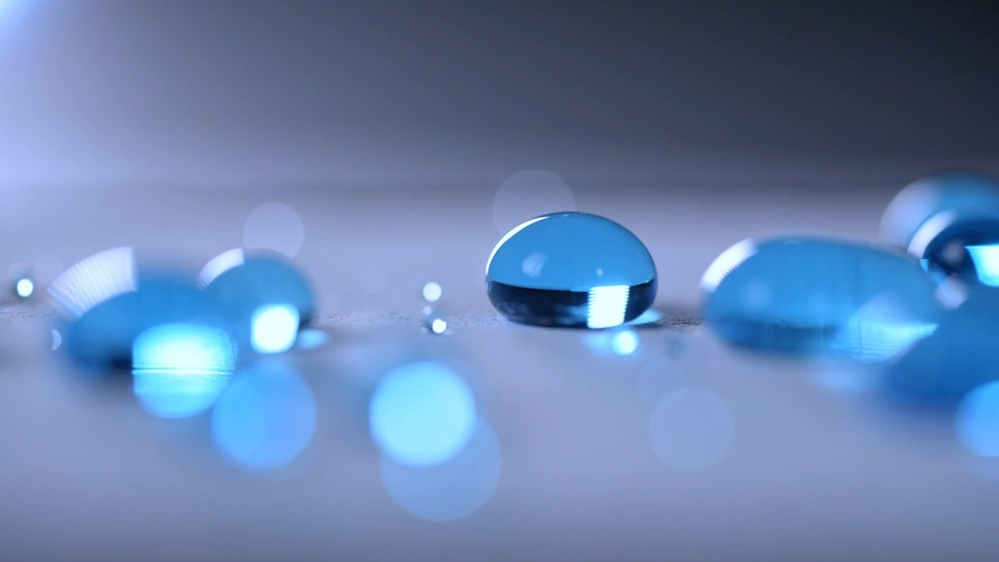
While waterproofing the surface of the material, super hydrophobic nano-technology does not impact the breathability of the material, allowing them the breathe and letting moisture escape from inside the property. This is achieved by the technology lining the pores of brick & masonry walls, but not sealing these pores. This means that water is too large to enter through the pores, but water vapour can freely pass through the surface. This technology is available both in the coloured Emperor Masonry Paint or the clear Emperor Masonry Creme. While Emperor Masonry Paint is ideal if you want to paint & protect masonry walls in one, Emperor Masonry Creme can be applied to bare brick & masonry surfaces, which absorbs into the brickwork rather than creating a film on the surface. This means that it waterproofs the masonry itself, rather than create a waterproof coating like a 'sealer'.
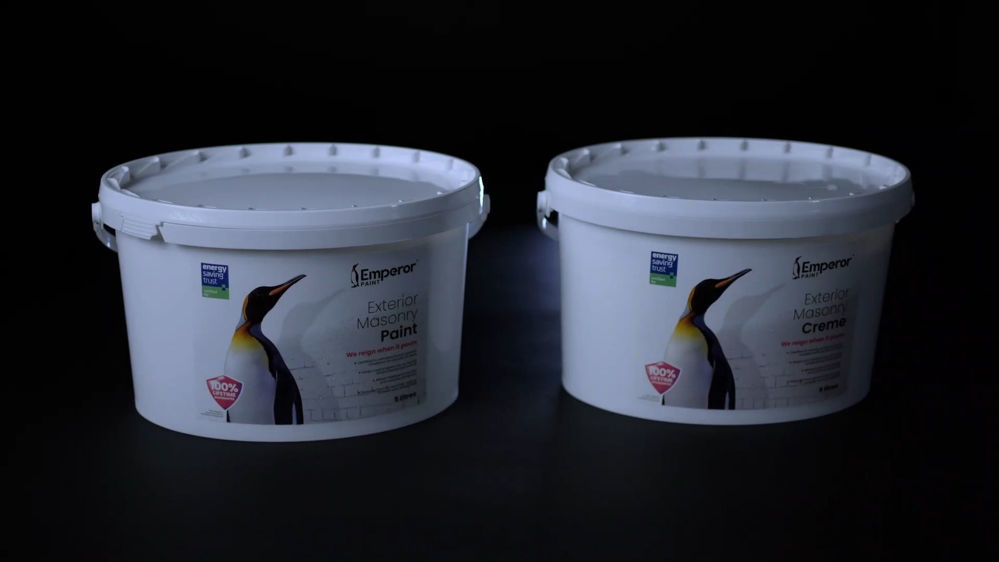
The highly advanced nature of the technology gives both products unrivalled durability. In independent testing conducted by UKAS accredited laboratory Lucideon, both products were found to have no change in appearance of performance after 25 years of heavy weathering. Due to this, they both come with a lifetime guarantee, thanks to their ability to withstand any weather conditions without peeling or flaking. In the same testing, both products were also found to prevent 96% of water absorption, remain highly breathable (with SD values of 0.01 and 0.03 respectively) and to keep a brick wall up to 6°C warmer on average when compared to a brick wall that was left untreated and exposed to the same weathering. For this reason, following the results, both Emperor Masonry Paint & Emperor Masonry Creme were verified by the Energy Saving Trust following their independent review process.
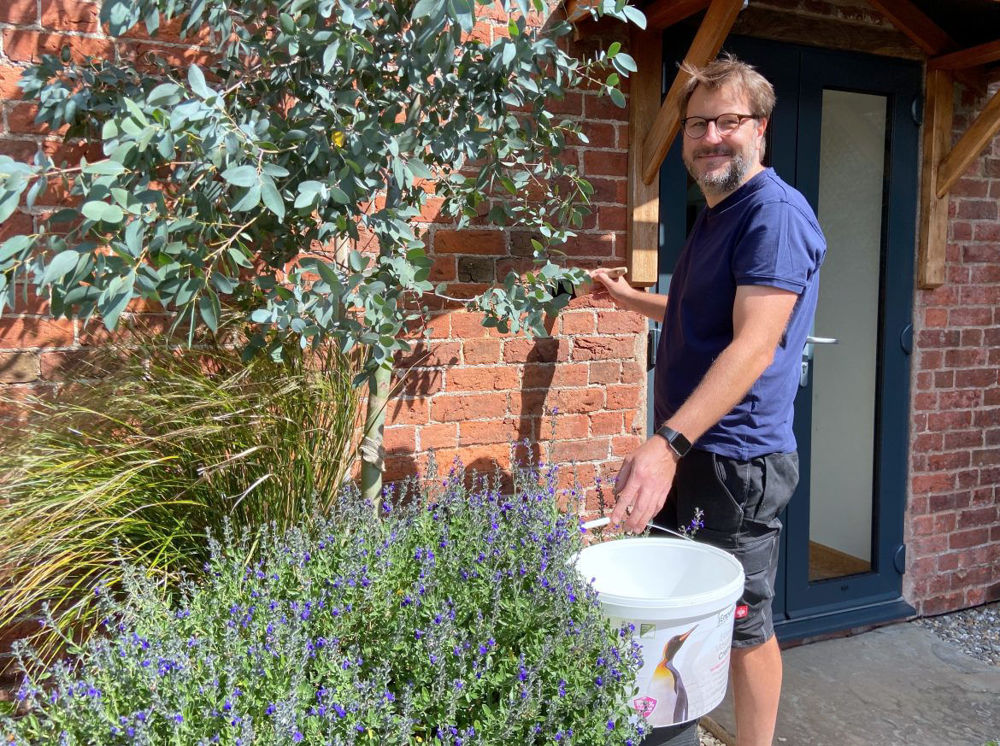
A Step-By-Step Guide To Waterproofing Brick & Masonry Walls
Before you start the process of waterproofing brick & masonry, make sure you have the right tools for the job. This will make the application a quicker & smoother process.
YOU WILL NEED:
- Long-pile masonry roller
- Paint tray
- Paint brush
- Dust brush
- Sandpaper
- Dust sheets
- Window film
- Masking tape
- Emperor Masonry Paint or Emperor Masonry Creme
- Emperor Exterior Primer (if required)
- Emperor Exterior Cleaner
PREPARATION
Ensuring that the surface is clean & ready for painting is essential for ensuring the best possible results. Taking time at the preparation stage may seem like a waste of time, but it is the most important stage of the process, as any professional decorator will tell you. While the application process for Emperor Masonry Paint & Emperor Masonry Creme differ, the preparation of the surface has a number of common steps.
1. There may be signs of a white powdery substance on the brickwork. This is called 'efflorescence' which is caused by water ingress. Remove this before continuing the waterproofing process. In some cases, using a dry, stiff brush can remove the salt deposits from surface of smooth surfaces.
Read the full guide to removing efflorescence.
2. Assess the brick walls for any signs of cracks or damage. If there are any defects in the brickwork, ensure you repair these before applying a waterproofing treatment as this can allow moisture to enter the substrate. Use a good-quality exterior filler to repair any cracks as the brickwork, working the filler back and forth with a filling knife. Leave it to dry as per the manufacturers instructions, then once dry you can sand the filler back to leave a smooth finish.
3. Brush off any visible dirt from the masonry with a dust brush. If you leave any dirt on the wall, this can compromise the ability for the treatment to be effective.
4. If there is any peeling paint on the brickwork, remove this using a scraper. If you are painting the surface using Emperor Masonry Paint, you can leave any paint that is still sound on the wall. If you are applying Emperor Masonry Creme, you must remove all paint from the surface as the treatment must be able to soak into bare, unpainted surfaces such brick, stone & concrete.
5. While ensuring the surface is dry, apply the Emperor Paint Exterior Masonry Cleaner. This is a fungicidal masonry cleaner that kills any fungal growth, leaving the surface ready to prime and paint. If you leave any fungal growth on the wall before you apply a coating to the wall, it can cause the growth to cause the treatment to burst.
6. Allow the cleaner to dry and be absorbed into the surface of the building for a minimum of 2 hours. If you are intending to use Emperor Masonry Creme, wash the surface after two hours with a hose to remove any residue and then leave to dry again. This is not necessary if you are intending to use Emperor Masonry Paint as the coloured paint will cover any residue.
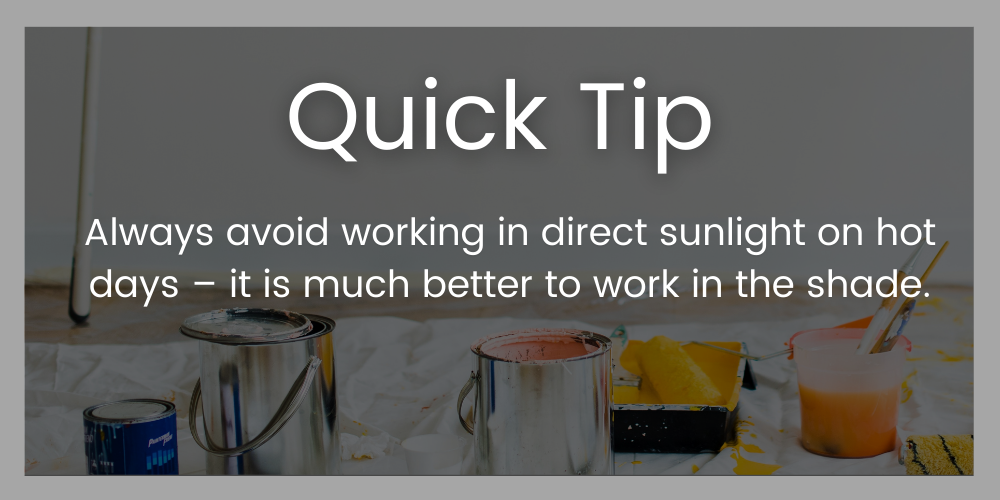
7. If using Emperor Masonry Paint, ensure that Emperor Paint Primer is applied before the paint to bare surface such as brick or render. This is not required if you are using Emperor Masonry Creme or if the surface you are painting has been previously painted. Ensure that the primer is completely dry before apply the paint. This will take 3–5 hours at 20°C.
8. Apply masking tape along any the edges of areas you are not painting, such as doors and windows.
9. Set the dust sheets underneath the area you will be painting to reduce the risk of paint splashing on to other surfaces.
APPLICATION
Ensure conditions are dry before beginning painting, this is required to ensure the waterproof paint can correctly cure into the exterior walls. Furthermore when the temperature is below 5°C Emperor Paint should not be applied.
It is important to check the coverage of the product you are using and the number of coats required. Emperor Masonry Paint is a two coat system, while Emperor Masonry Creme only requires one coat.
1. Apply the product to the edges of the wall using a brush.
2. Once you have cut in around the edges, apply the coating using a paint roller, ensuring that the coverage is even. The optimal coverage is approximately 5–6m² per litre for Emperor Masonry Paint and 3-5m² per litre for the Emperor Masonry Creme.
3. Once applied, allow Emperor Masonry Paint to completely dry before applying a second coating. This should take approximately 8 hours, but may take longer. Emperor Masonry Creme is a one-coat system, so once applied leave to cure into the brick. Do not attempt to brush the product into the brick as it must be allowed to soak into the brick as it cures. It is a gel like consistency that will appear translucent at first but will dry completely clear without altering the appearance of the brickwork in any way.
.png)
The waterproof ability of the treatments requires a curing process to allow the technology to fully line the pores of the surface. While the coatings will still be waterproof while curing, the full beading ability of the products will not be present until completely cured. This can take up to 2 weeks with Emperor Masonry Paint or a few hours with Emperor Masonry Creme.
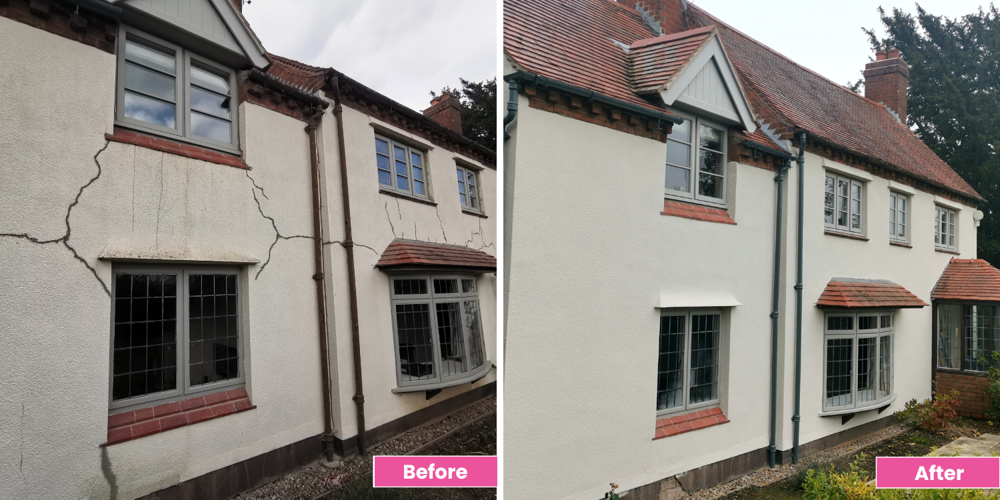
Waterproofing Brick & Masonry - Frequently Asked Questions
Q. CAN YOU APPLY BRICK AND MASONRY WATERPROOFING PRODUCTS TO PREVIOUSLY PAINTED WALLS?
A. Yes, you can apply Emperor Masonry Paint over previously painted surfaces. You can not apply Emperor Masonry Creme on a painted surface. Remove this layer of paint if you wish to use the product, as this is designed for untreated absorbent mineral surfaces such as brick, concrete & stone.
Q. DO THE PRODUCTS DRY MATT OR SHINY?
Emperor Masonry Paint dries with a matt finish while Emperor Masonry Creme will penetrate into the substrate of the masonry and dry without altering the appearance of the masonry. This is in contrast to brick sealers that create a film on brick, often leaving a sheen on the surface rather than offering a natural look.
Q. HOW OFTEN WILL I NEED TO RE-APPLY MASONRY PAINT?
The life expectancy of masonry paints can vary. Emperor Paint products have a lifetime expectancy of over 25 years as shown through independent tests conducted by UKAS accredited laboratory Lucideon. In a 25-year accelerated weathering test, Emperor Paint & Masonry Creme showed no signs of reduced performance or aesthetic change. This means that that both products will far exceed 25 years, which is why they both come with a lifetime guarantee.
Q. WHEN IS THE BEST TIME TO APPLY BRICK WATEPROOFING TREATMENTS?
As previously mentioned, you should not apply masonry paint in temperatures below 5°C or in wet conditions as the surface must be completely dry to be effectively waterproofed. This means that it is not ideal to apply masonry paint in winter months. Try and allocate a period where no rain is forecast and where you will have enough time to apply two-coats, if using a two-coat masonry paint.
Q. HOW MUCH MASONRY PAINT DO I NEED?
It is essential to check the coverage of the masonry paint you are using before beginning the painting process. We recommend that you calculate this so you are guaranteed to have enough paint, as this will ensure that the full project can be completed evenly at the same time. Painting patches on different days will lead to an unsightly finish to your masonry. We've put together a handy tubs of paint matrix, which will allow you to estimate the number of paint tubs you'll need to paint your house with Emperor Paint so you can work out exactly how much you will need to complete the job.
Calculate how many tubs you will need using our paint coverage calculator.
Q. HOW MUCH DO WATERPROOFING PRODUCTS COST?
A. The price of waterproofing treatments can vary depending on the longevity and quality of the product. As the most advanced masonry paint on the market, Emperor Paint offers unrivalled value for money. Due to the one coat application of Emperor Masonry Creme, a 10 litres tub is approximately enough to fully coat a mid-sized terraced house.
Not only does the masonry paint offer value for money in the short-term, it offers long-term value for money from significantly reduced maintenance costs. Whereas a less advanced masonry paint will need recoating after as little as 5 years, Emperor Masonry Paint will not peel or flake for a minimum of 25 years. Furthermore, applying a waterproof masonry paint will protect you from extremely costly damp prevention and repair.
Q. WHAT IS THE DIFFERENCE BETWEEN ANTI-DAMP PAINT AND BRICK WATERPROOFING PRODUCTS?
Damp proof paint, otherwise known as anti-condensation paint is a form of interior emulsion that prevents mould growth by reducing the amount of condensation that gathers on interior walls. It is commonly used in high moisture rooms such as bathrooms & kitchens. Brick waterproofing treatments while they can help reduce damp, are external products. They prevent penetrating damp which is an external form of moisture than soaks into absorbent bricks through into the internal wall. Understanding what is causing your damp problems is essential for knowing what type of product to use.
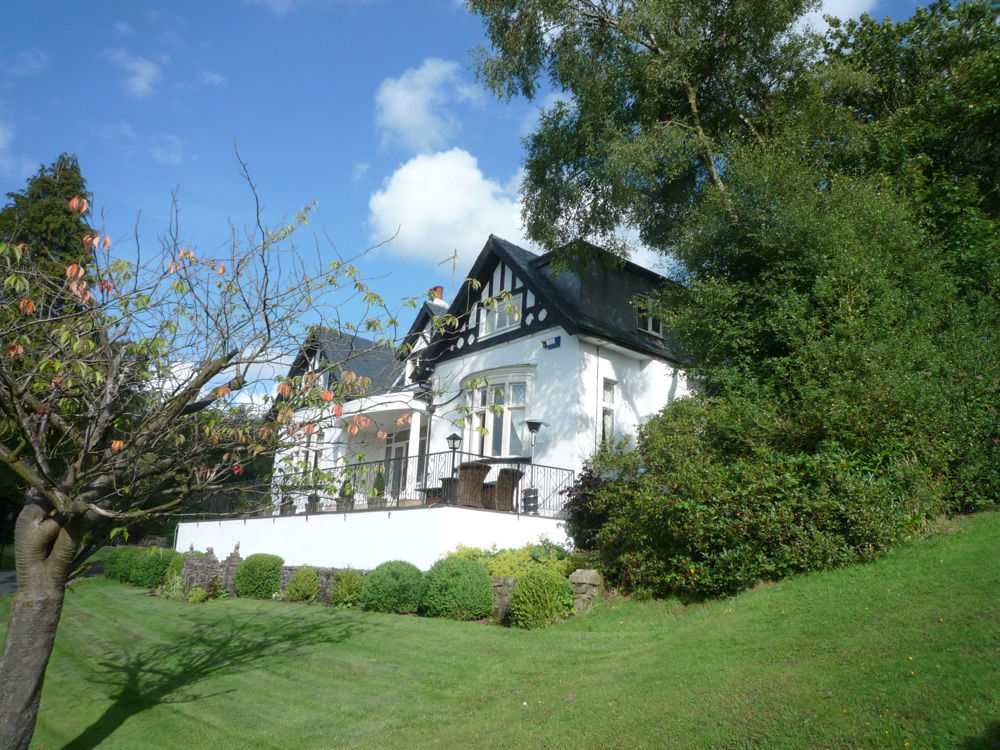
We hope this guide has answered any questions you had regarding waterproofing brick & masonry walls. If you have more questions, we are here to help with our full technical support from our in-house team of experts. Whether your suffering for penetrating damp and want to know if the products can help you or want to find out more information about our brick waterproofing treatments, they are on hand to help. Talk to one of our experts today or shop Emperor Masonry Creme or Emperor Masonry Paint.

